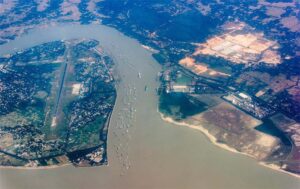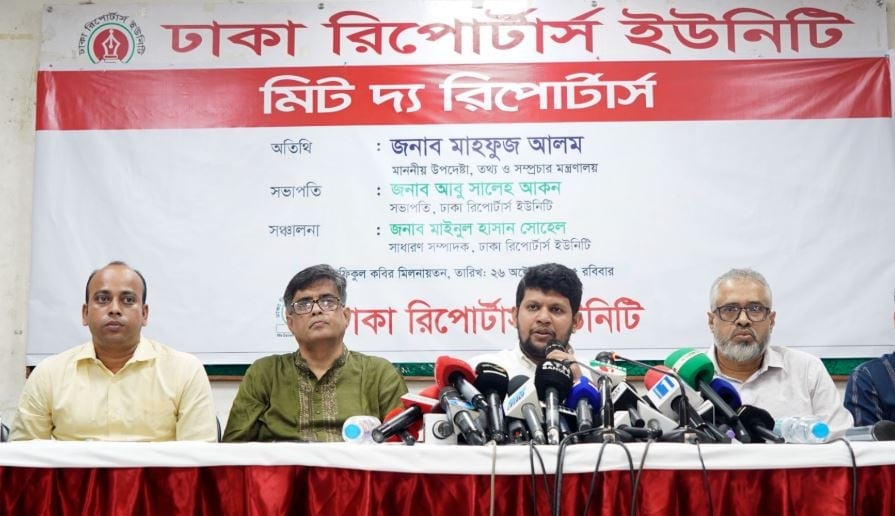 Abir Hasan Sujan: There is no one who has not fallen in love with the Karnaphuli river full of youth. Everyone from poets, writers, musicians, naturalists. Matwara fell in love with this river. Many people have written poems, songs or stories-novels about this river. But it is very sad that the Karnaphuli River, the life of Chittagong, is now a victim of severe pollution due to the toxic waste of industries. The water of Karnaphuli is becoming severely polluted due to the numerous illegal settlements built on and around the river and the effluents of industries and factories are discharged into the river. Due to water pollution from industrial waste, the environment of this river is also on the way to becoming a commodity.
Abir Hasan Sujan: There is no one who has not fallen in love with the Karnaphuli river full of youth. Everyone from poets, writers, musicians, naturalists. Matwara fell in love with this river. Many people have written poems, songs or stories-novels about this river. But it is very sad that the Karnaphuli River, the life of Chittagong, is now a victim of severe pollution due to the toxic waste of industries. The water of Karnaphuli is becoming severely polluted due to the numerous illegal settlements built on and around the river and the effluents of industries and factories are discharged into the river. Due to water pollution from industrial waste, the environment of this river is also on the way to becoming a commodity.
More than three hundred factories built on both sides of the river and garbage of the metropolis is one of the causes of pollution. Biodiversity is under threat due to pollution, say river researchers. At least 30 species of fish have been lost.
According to fisheries experts, Karnaphuli river once had around 140 species of fish. Of these, 60 are fresh water, 59 mixed water and 15 marine species. But due to pollution, freshwater fish are almost extinct. Of the remaining fish species, other than 10 to 20 species are now unavailable.
Once dolphins used to jump in Karnaphuli river but now those dolphins are not seen. Along with pollution, this river is also a victim of climate change. On the other hand, 476 meters of river has been filled in the northern part of Shah Amanat Bridge. In 2016, due to fish market, ice mill, illegal encroachment and sheep market built by filling the river, the current of Karnaphuli River in the estuary area of Chaktai canal has reduced to 461 meters.
About 5 thousand tons of sewage and household waste are falling into Karnaphuli through 36 canals of Chittagong city. Also there are industrial and medical wastes. Apart from this, the pollution of Karnaphuli has reached its peak due to the burning oil of boats plying in the river. Canals adjacent to the river are the most affected by the pollution. Also, the pollution of Karnaphuli is increasing due to oil from ships, waste from Karnaphuli paper mills, garbage from city corporations and waste from factories. According to river researchers, at least 20 to 25 species of fish have been lost due to pollution. According to a joint research report by the University of Hong Kong, RMIT University, Australia and Chittagong University Marine Science Institute, only the fertilizer factories in Karnaphuli release 145 cubic meters of polluted water, 35 metric tons of china clay, 4 metric tons of cellulose and sodium hydroxide every day.
The study showed that heavy metals such as chromium, copper, nickel, lead and zinc have been accumulated in the Karnaphuli riverbed for the past 30 years and the depth of the river has decreased sharply. The report also mentions that the presence of chromium, copper and lead in the water has exceeded the safe limits, causing a disaster in the ecology of the river and the people living nearby. According to Manjurul Kibria, professor of Zoology Department of Chittagong University, who is researching the fish of Karnaphuli, there are about 20 to 25 species of fish out of 66 species of freshwater in Karnaphuli. Extinct, out of 59 species of saltwater fish, 10 species have been lost. Dolphins and other aquatic animals and biodiversity are in critical condition.
Therefore, to save the Karnaphuli river, the illegal encroachments on both sides must be removed. It is important to restore the canals of Chittagong city. Do not discharge industrial waste, domestic and sewage into rivers. The use of plastic waste should be reduced wherever possible. The four projects that have been approved by the government in the last five years to alleviate the waterlogging of Chittagong and restore the navigability of Karnaphuli should be properly implemented.
Government should focus on Karnaphuli River. Empowering them by river commission. So that the river can be protected. A long-term plan is needed to protect the Karnaphuli and early eviction of riverine encroachments. Because, due to encroachment, the width of the river has decreased. Besides, the environment department has to take effective initiatives to reduce the pollution of the river. According to the court verdict, the Karnaphuli river has to be protected. For this purpose, the concerned authorities should play a responsible role. Those involved in river encroachment and pollution should be severely punished. The concerned authorities have to work together to protect all the rivers of the country.
Abir Hasan Sujan is a columnist and President of Jagannath University Feature Column & Content Writers Forum. He can be reached at abirsuzon4@gmail.com






